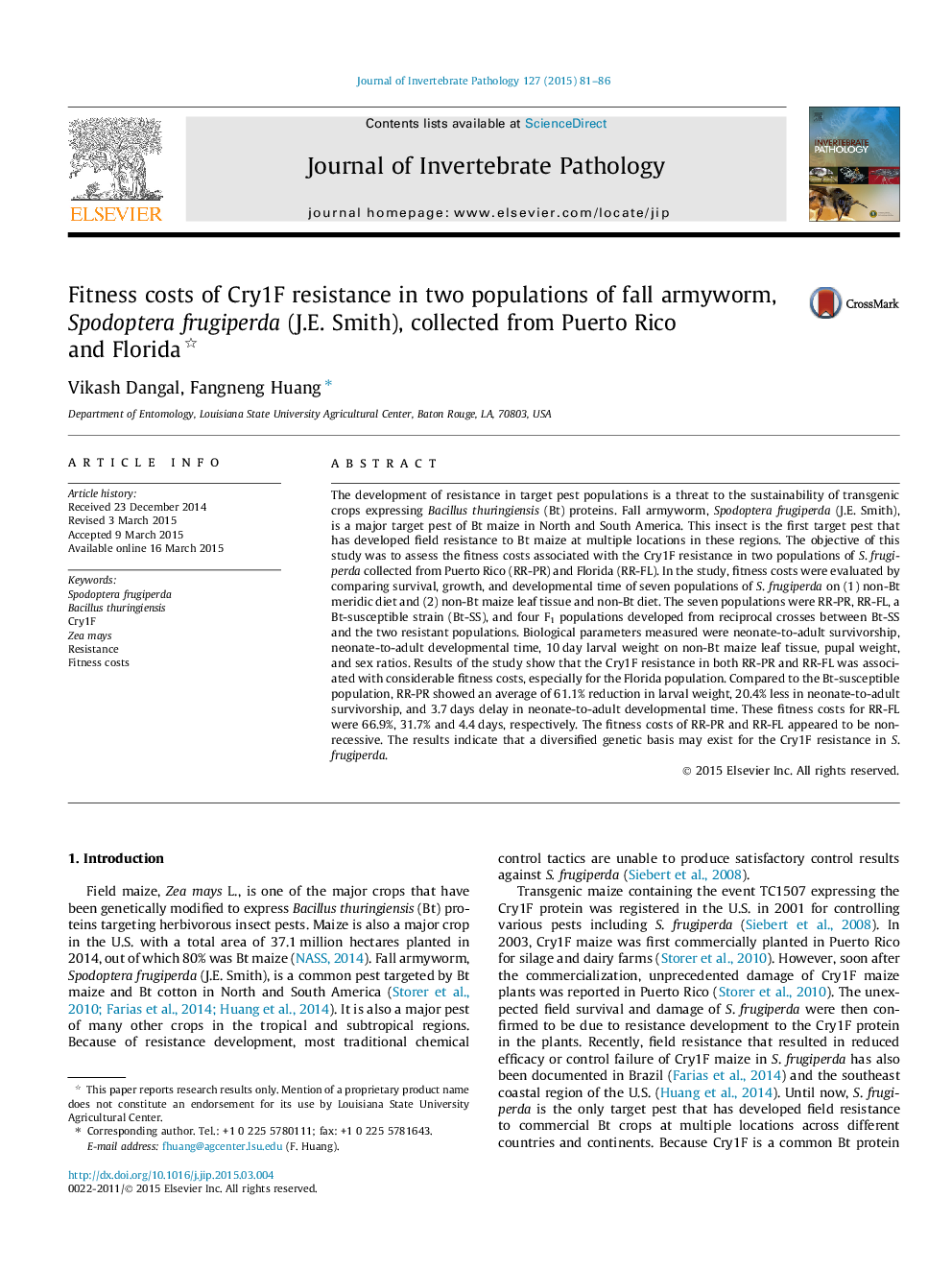| کد مقاله | کد نشریه | سال انتشار | مقاله انگلیسی | نسخه تمام متن |
|---|---|---|---|---|
| 4557643 | 1628225 | 2015 | 6 صفحه PDF | دانلود رایگان |

• Fitness costs of Cry1F resistance were evaluated in two populations of Spodoptera frugiperda from Puerto Rico and Florida.
• Fitness costs were associated with both resistant populations.
• The fitness costs in the two populations appeared to be non-recessive.
• A diversified genetic basis may exist for Cry1F resistance in S. frugiperda.
The development of resistance in target pest populations is a threat to the sustainability of transgenic crops expressing Bacillus thuringiensis (Bt) proteins. Fall armyworm, Spodoptera frugiperda (J.E. Smith), is a major target pest of Bt maize in North and South America. This insect is the first target pest that has developed field resistance to Bt maize at multiple locations in these regions. The objective of this study was to assess the fitness costs associated with the Cry1F resistance in two populations of S. frugiperda collected from Puerto Rico (RR-PR) and Florida (RR-FL). In the study, fitness costs were evaluated by comparing survival, growth, and developmental time of seven populations of S. frugiperda on (1) non-Bt meridic diet and (2) non-Bt maize leaf tissue and non-Bt diet. The seven populations were RR-PR, RR-FL, a Bt-susceptible strain (Bt-SS), and four F1 populations developed from reciprocal crosses between Bt-SS and the two resistant populations. Biological parameters measured were neonate-to-adult survivorship, neonate-to-adult developmental time, 10 day larval weight on non-Bt maize leaf tissue, pupal weight, and sex ratios. Results of the study show that the Cry1F resistance in both RR-PR and RR-FL was associated with considerable fitness costs, especially for the Florida population. Compared to the Bt-susceptible population, RR-PR showed an average of 61.1% reduction in larval weight, 20.4% less in neonate-to-adult survivorship, and 3.7 days delay in neonate-to-adult developmental time. These fitness costs for RR-FL were 66.9%, 31.7% and 4.4 days, respectively. The fitness costs of RR-PR and RR-FL appeared to be non-recessive. The results indicate that a diversified genetic basis may exist for the Cry1F resistance in S. frugiperda.
Figure optionsDownload as PowerPoint slide
Journal: Journal of Invertebrate Pathology - Volume 127, May 2015, Pages 81–86